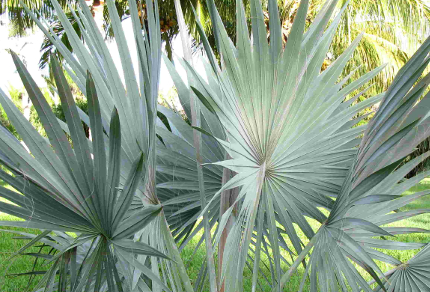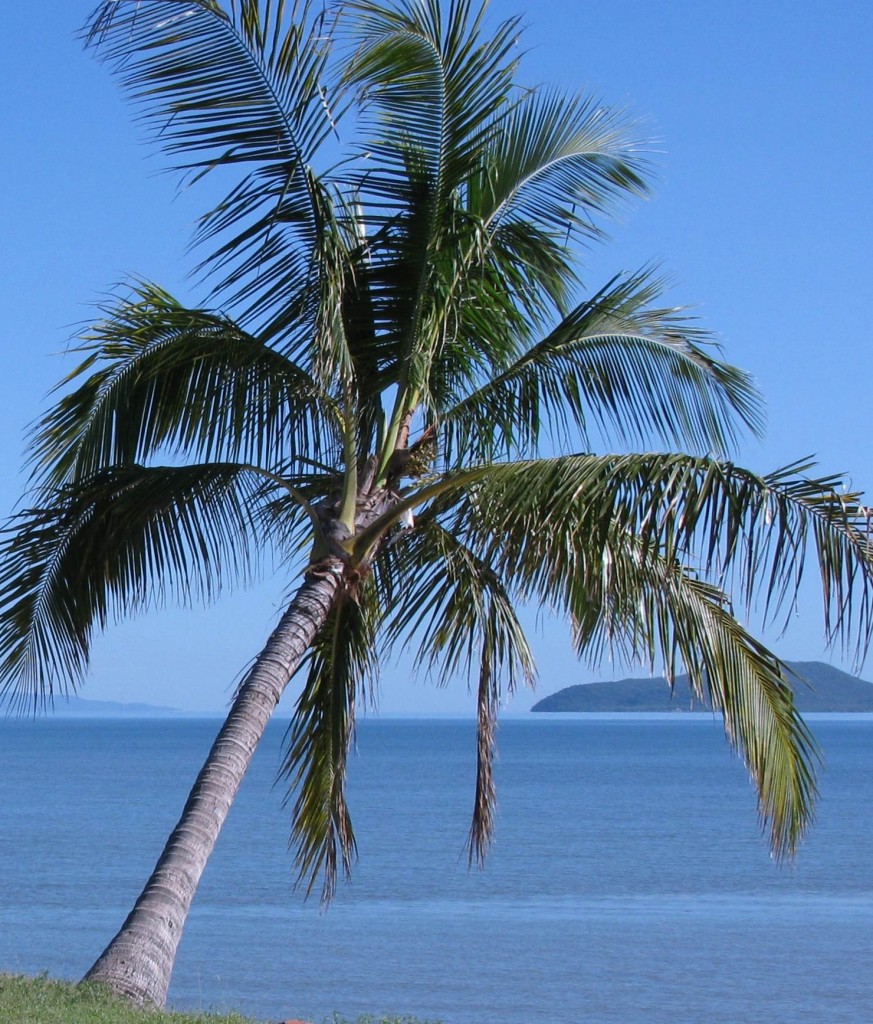
Coconut Palm at Rowe’s Bay (© Vilis Nams)
In fresh, positively cool morning air, a quartet of rainbow lorikeets raced across blue sky, with sunlight painting their rainbow colours vivid shades of green, red, blue, orange, and yellow. They, like the palm trees that grace Townsville’s streets and yards, appeared to embody the essence of the tropics. Having indulged my passion for birds by attempting to identify as many Australian bird species (as well as reptiles, mammals, frogs, and butterflies) as possible during our four months here, I decided last week that I should expand my biological interests to include palm trees. To that end, I signed out a book from the library written by David L. Jones and titled Palms in Australia,1 from which I learned a number of fascinating facts about palms. These are summarized below.
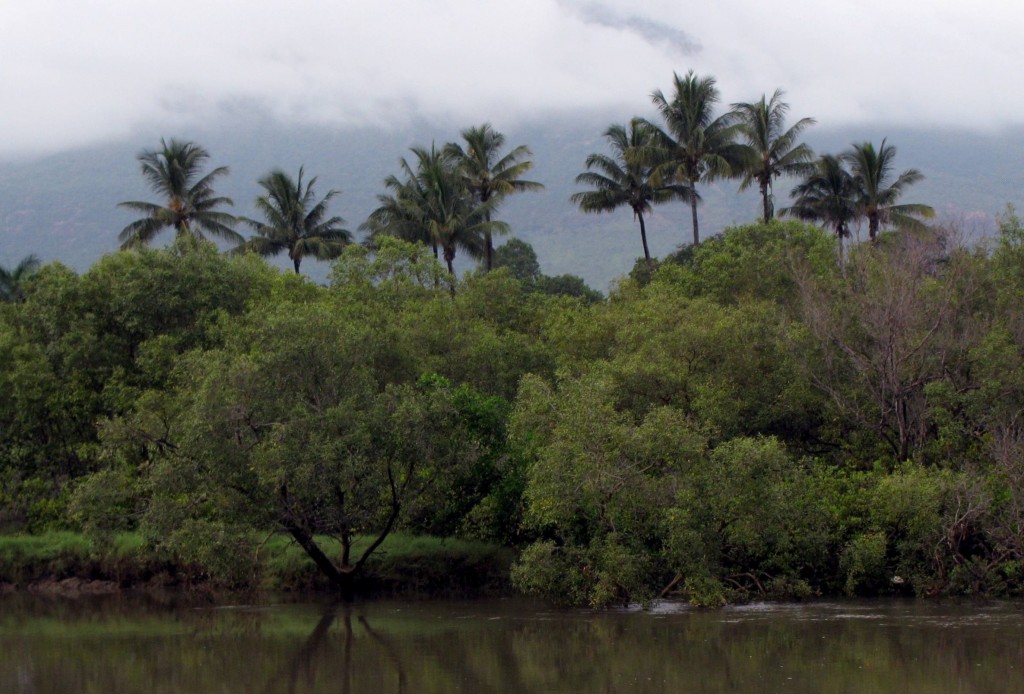
Palms near Ross River, Townsville (© Magi Nams)
Most of the world’s approximately 2600 species of palms grow naturally in tropical rainforests, although some grow in savannah grasslands, open forests, and along sandy coasts or in mangrove swamps.2 Australia has about 60 species of native palms,2 and numerous exotic species are used very effectively in landscaping. Of the native species, nearly all grow along Australia’s coasts, with just a few tough species surviving along inland rivers and gorges.3 While in Tasmania, Vilis and I never saw a palm growing in the wild, and Palms in Australia confirmed this observation by stating that palms grow only as far south as eastern Victoria.3 As with many other groups of Australian plants and animals, most native palms are endemic to this country, with 80% of the species occurring nowhere else.3
Like the majority of plants, palms can be described in terms of five basic parts – roots, stems or trunks, leaves, flowers, and fruits. The roots that sprout from palm seedlings are short-lived and soon replaced by adventitious roots that sprout from the base of the trunk.4 A few palm species produce aerial roots that may become the main support system for the trunk.5

Tall Fan-leaved Palms and ShorterPinnate-leaved Palms in Anderson Park Botanical Gardens, Townsville (© Magi Nams)
Most palms possess a solitary or single trunk, but others form clumps of trunks from suckers, a few have branched trunks, and still others have no obvious trunks or climb like vines among rainforest vegetation.6 The last of these include the wait-a-while palms with their barbed, dangling tendrils hanging down into rainforest bushwalking tracks, like those that snagged us on our hikes around Lakes Eacham and Barrine in Crater Lakes National Park two weekends ago. Palm trunks possess thickened, hardened epidemal cells, but no real bark.7 Their surface may be smooth, spiked, or retain jutting leaf bases from fallen leaves.8 Most palm trunks are slim because, with no bark to support their mass, they are limited in the girth they can attain.7 In addition, they usually start to grow upward only after attaining their largest circumference.8
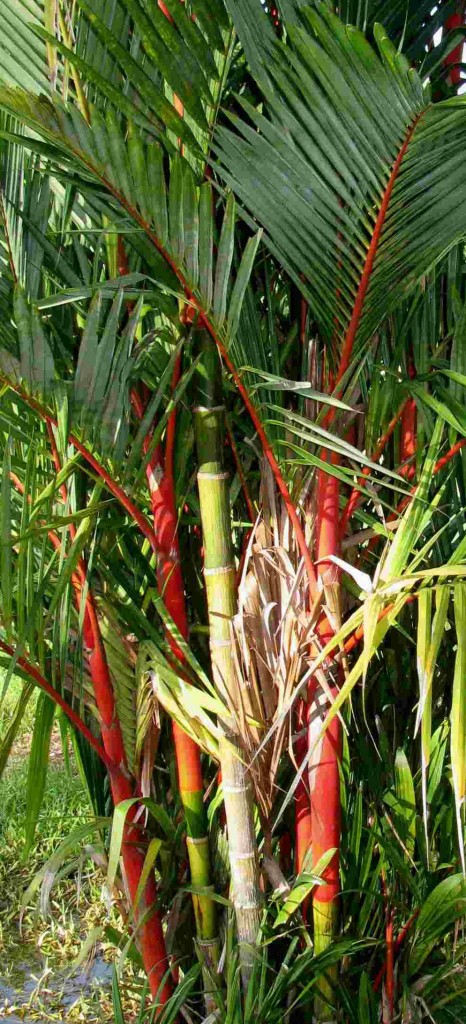
Lipstick Palms in Palmetum Park, Townsville (© Magi Nams)
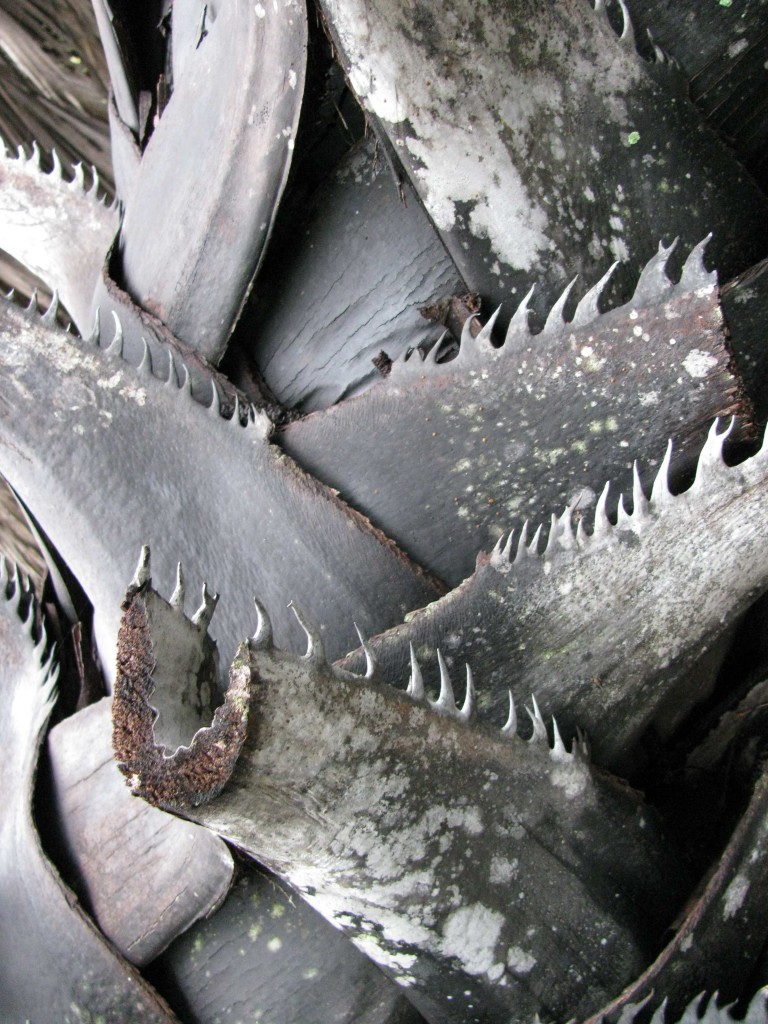
Palm Leaf Bases (© Magi Nams)
The leaves of palms fall into four different groups. The first of these consists of palms such as the coconut palms (shown at the start of this post), which have leaves that resemble feathers in the way the leaflets are arranged. Those palms are called feather-leaved or described as having pinnately-divided leaves.9 The second group is the fan-leaved palms. They have broad leaves generally folded into a fan shape along ribs and may be whole or divided into fingers.10 The third group of palms has leaves which are twice divided, or bipinnately divided, like the fronds of many ferns.11 The fourth group of palms has entire, undivided leaves.12
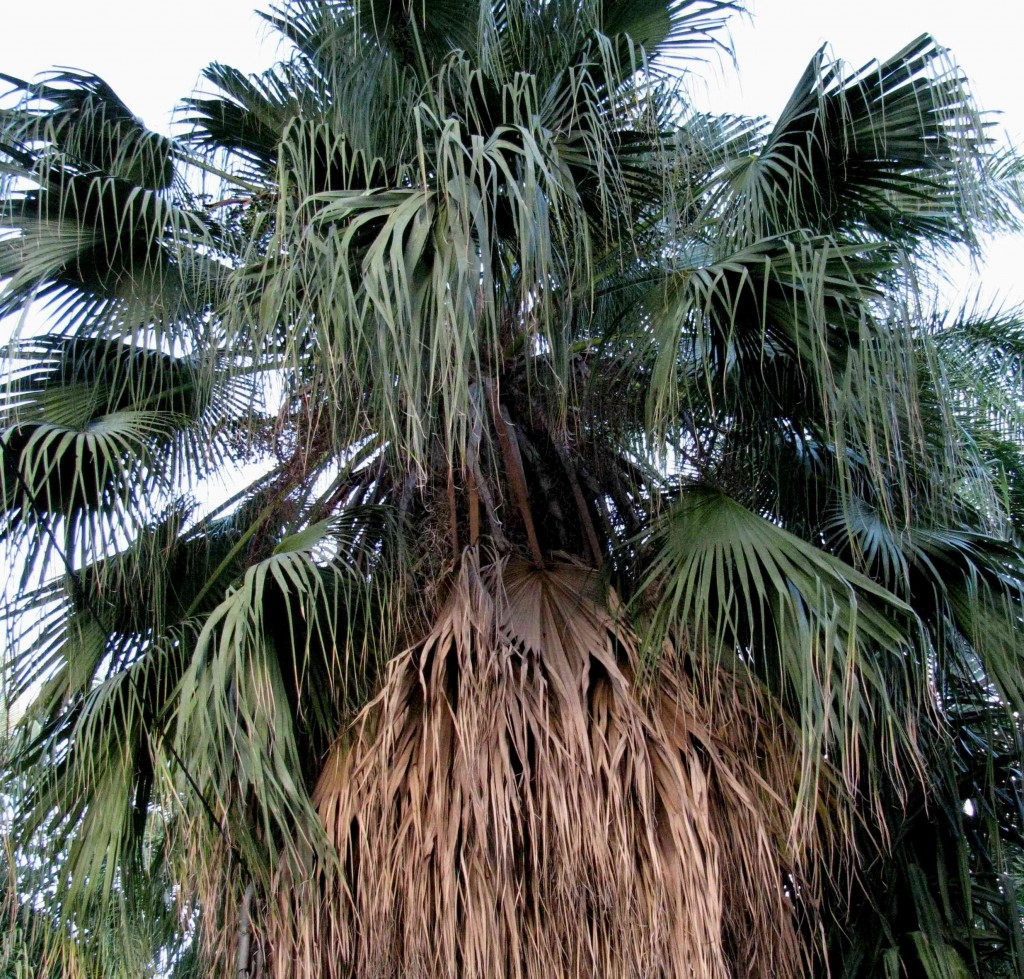
Fan-leaved Palm ( © Magi Nams)
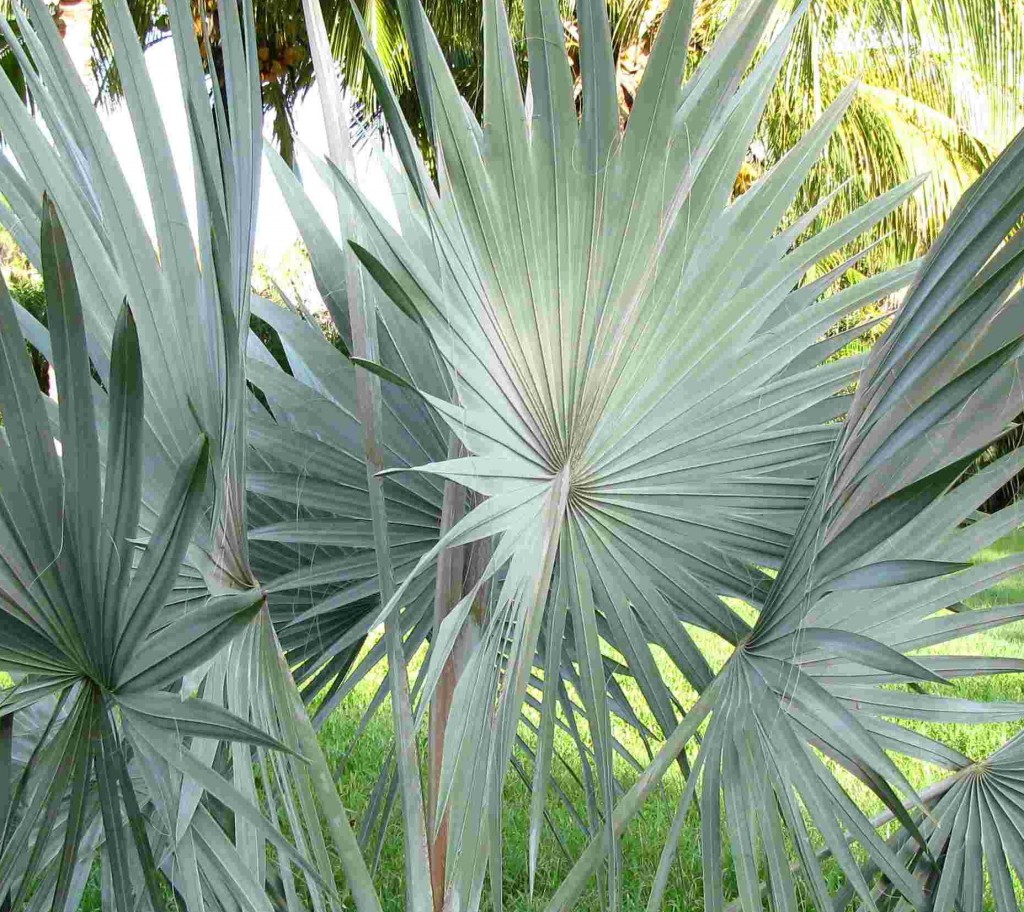
Fan-leaved Palm ( © Magi Nams)

Vilis with Dead Palm Leaf (© Magi Nams)
Some palms retain dead leaves attached to their trunks, the collection of dead leaves as a whole called a skirt, petticoat, or shag.13 Other palms drop their dead leaves, which may be extremely large. Raking up the leaves has a whole different meaning in Australia. Palms mature at from 3 years to 40 years, after which they start reproducing.14 Their flowers aren’t showy, but in some species occur in large clusters.14 Many palms are pollinated by bees, beetles, and flies, although some are wind-pollinated.14 Palm fruits vary in number and size from a few large coconuts to dense groupings of berry-sized fruits.14 I’ve observed figbirds feeding on palm berries, and one evening, I startled two common brushtail possums away from a number of chewed green coconuts, which I presumed they had been eating.
For me, the most captivating aspect of palm trees is the spectacular beauty of shape many species possess, along with inherent grace and the undeniable essence of the tropics.

Flowering Pinnate-leaved Palm Trees in Palmetum Park, Townsville (© Magi Nams photo)
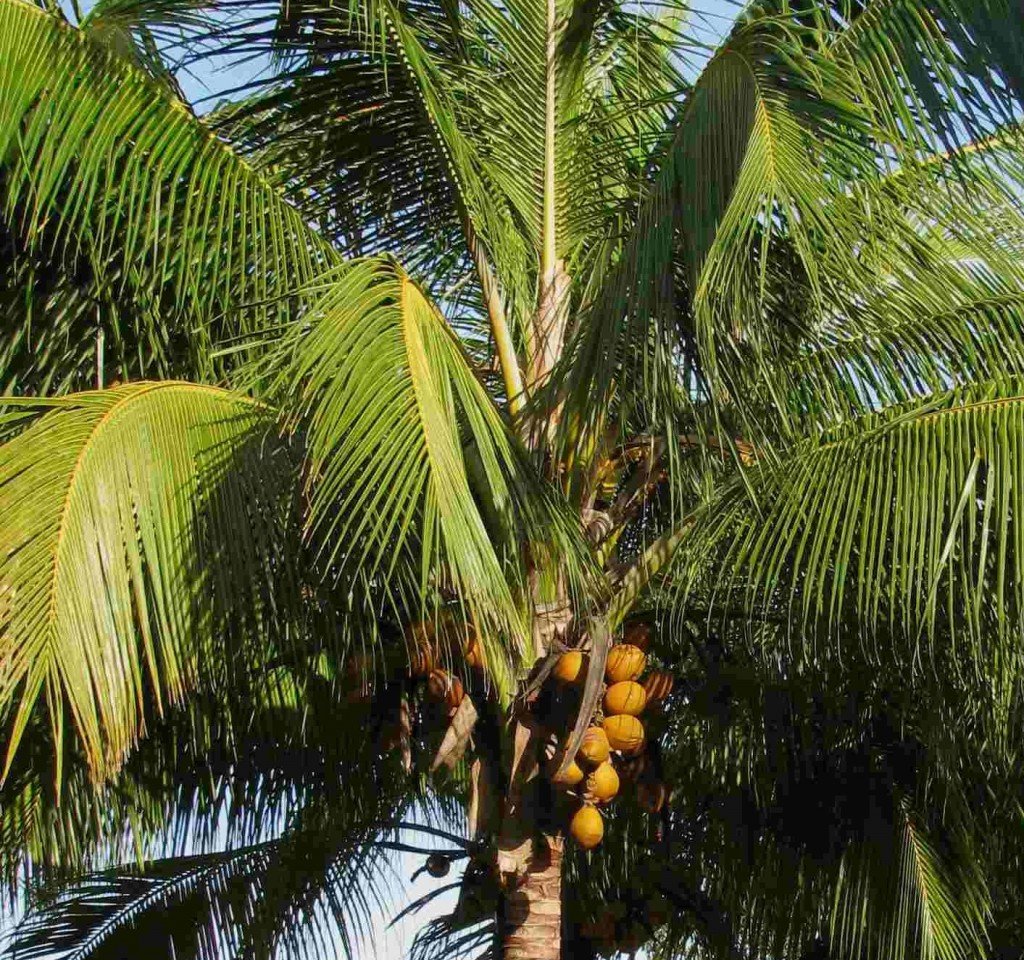
Coconut Palm in Palmetum Park, Townsville (© Magi Nams)

Palms on Townsville Golf Course (© Magi Nams)
Reference:
1. David L. Jones. Palms in Australia: Over 450 Native and Exotic Species. 1996, 3rd edition. Reed New Holland, Sydney. 278 p; 2. Ibid, p. 13; 3. Ibid, p. 75; 4. Ibid, p. 15; 5. Ibid, p. 16; 6. Ibid, p. 19; 7. Ibid, p. 16; 8. Ibid, p. 17; 9. Ibid, p. 22; 10. Ibid, p. 25; 11. Ibid, p. 28; 12. Ibid, p. 30; 13. Ibid, p. 12; 14. Ibid, p. 12.

